Gernika
A symbol of peace, in a green sea of tranquility
Spelled 'Guernica' in Spanish and pronounced /ger-NEE-kah/, the town of Gernika is a calm and scenic wee place. It is an international symbol of peace and a cultural centre of the Basque Country. It is a nice wee place for a day trip or even a few hours if you are on the way to the coast on the train from Bilbao. Situated on the Bilbao to Bermeo train line, it's easy and cheap to get to when staying in the city. It has a ton of things to do and see, even with the kids.
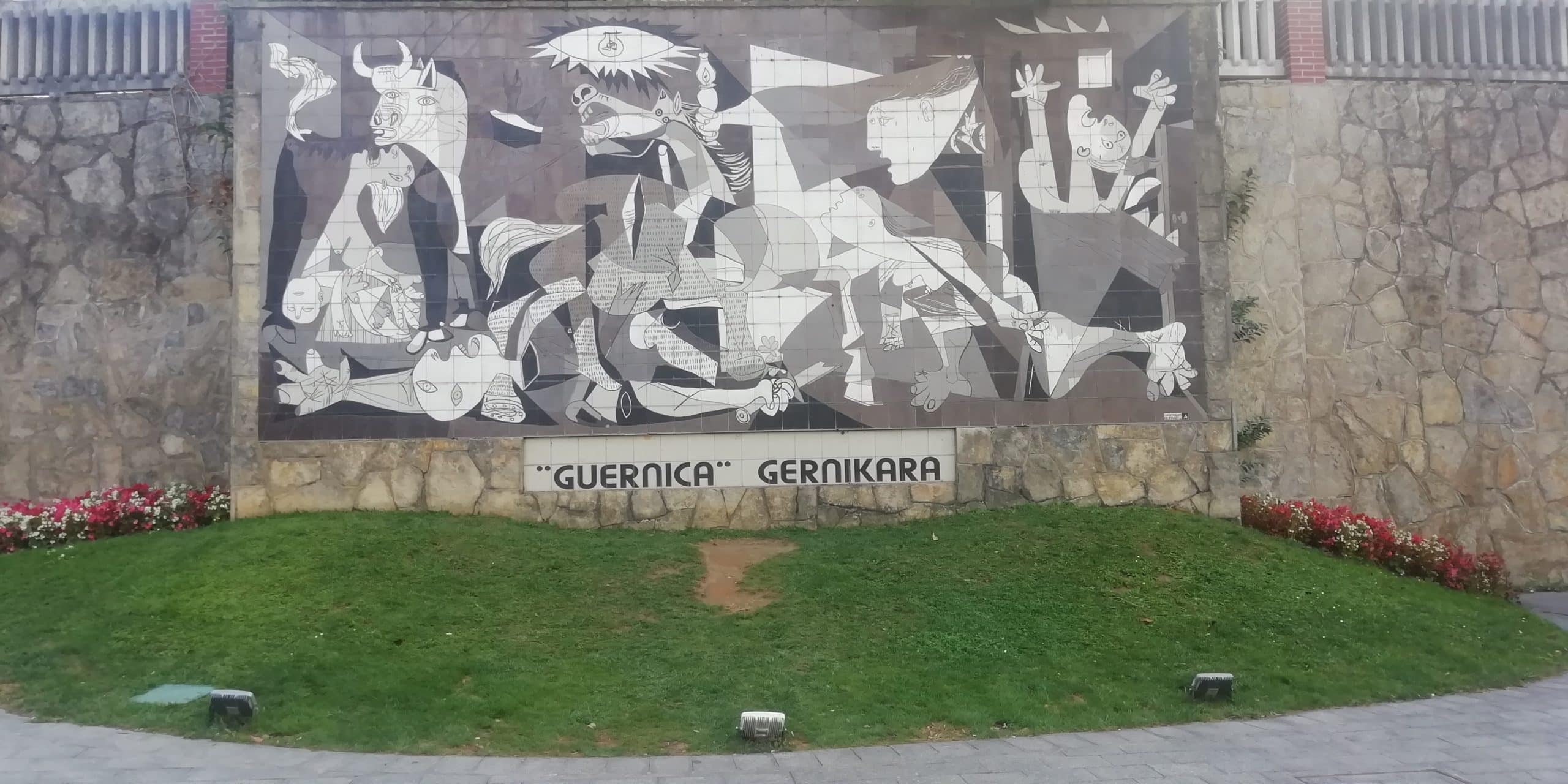
The tiled version of the famous work of art.
Guernica's tourist office uses a wonderful wee app, provided by Marco Topo. The app almost obliges you to get around every place of interest in the town, and there are many. It keeps the kids occupied and interested, as well as leaving them very informed on the place. You can see the website here (in Spanish), and many municipalities across Spain use it to guide visitors with small kids around their landmarks.
However, if you can't read Spanish or Basque, you will find the information you need in English at the tourist office along with competent English speakers. The tourist office is just across the street from the Peace Museum in Foru Plaza.
War and Peace
The little town in the centre of the Basque province of Bizkaia was an early victim of German aerial bombing, during the Spanish Civil War. Along with other attacks on the nearby town of Durango as well as the Spanish capital of Madrid, the Luftwaffe attacks served to prepare the German air force for the upcoming international conflict while providing a pivotal role in the Spanish Civil War.
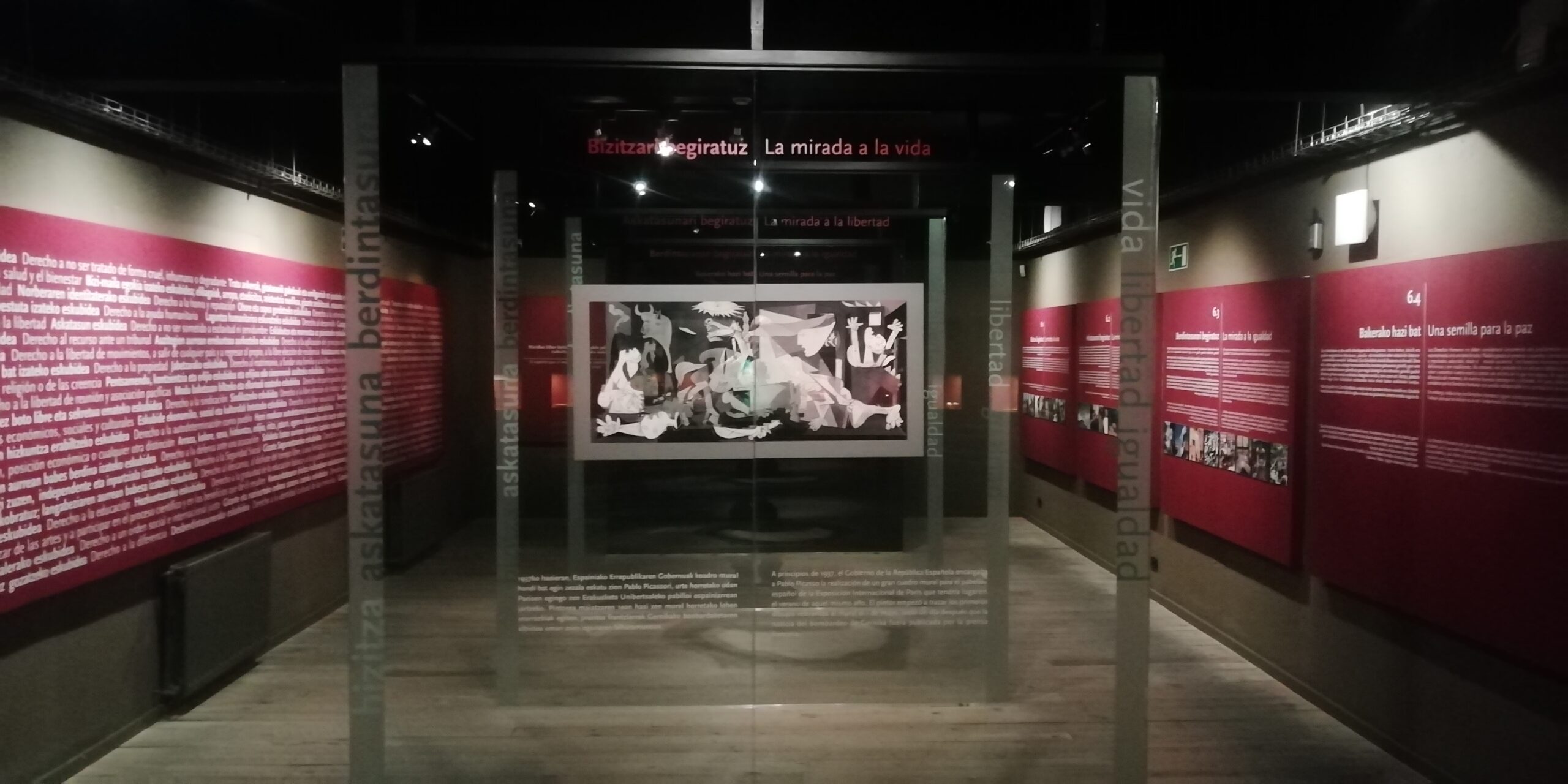
Inside the Peace Museum of Gernika
The bombing's victims have not been forgotten, and Gernika is now an international symbol of peace. This history is preserved in the Peace Museum, in Foru Plaza. It is difficult not to get emotionally involved with the subject matter as you tour the museum. There is a virtual story of the victims of the bombing with the museum trying to recreate the terror and emotion of this horrific event.
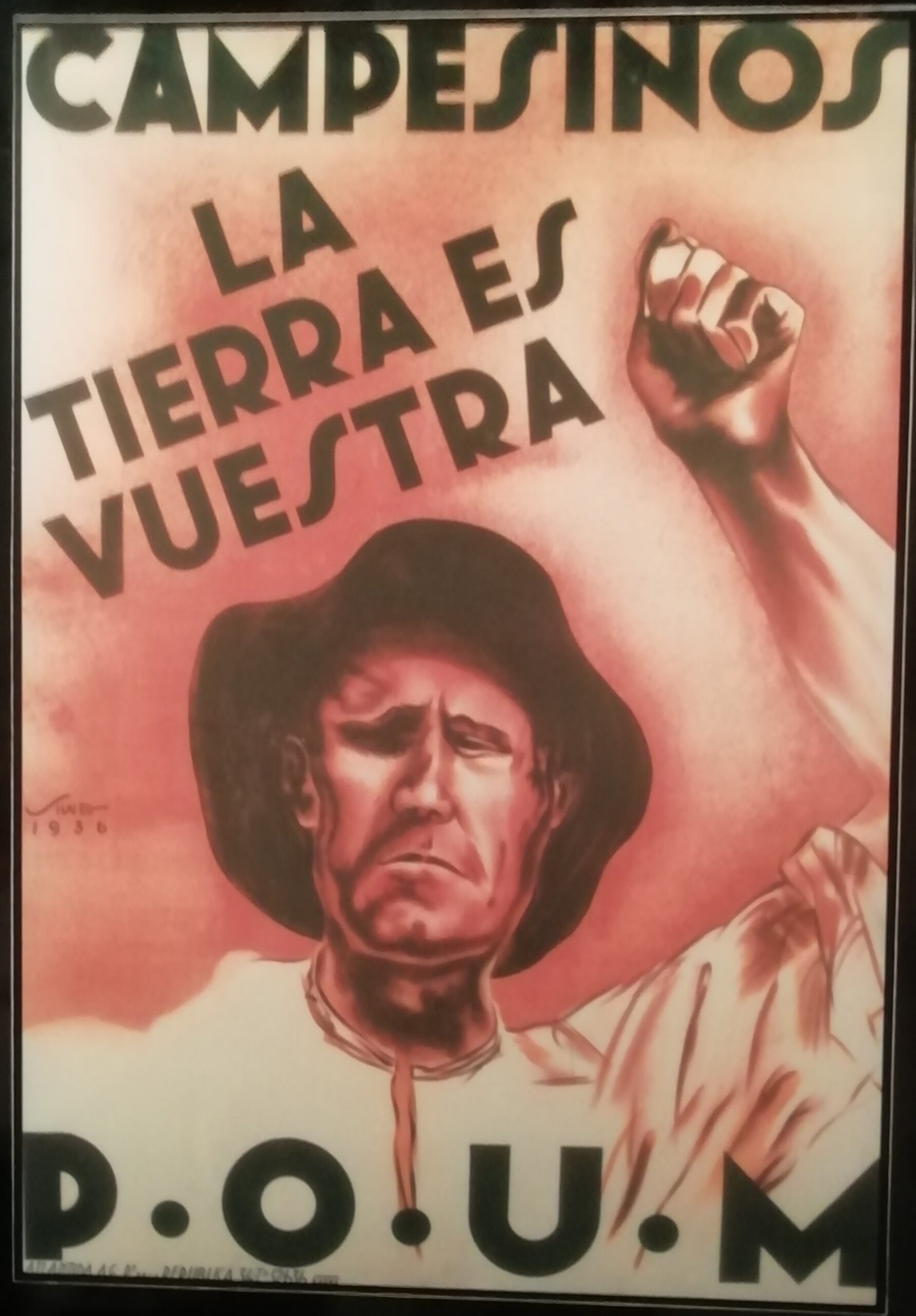
An example of the type of Civil War call to arms by the various parties and militias, in the case, the Marxist P.O.U.M, who writer George Orwell was a member of.
Elsewhere in the museum, there are displays of the various calls to arms from various political movements, in the form of posters. The Civil War lasted from 1936-39 and is very much seen as the forerunner of the second great war in Europe, and hopefully the last anywhere. The Civil War was disastrous for Spain as a whole, and the museum commemorates the war with a view to constructing a better future by educating us about the past.
You can find out more about the Guernica Peace Museum at this link.
Plazas and Peaks
Guernica is fairly typical of towns in the Basque Country. You have a series of plazas connected by streets, a good few pedestrianised, with plenty of pintxo bars to choose from. There are a few of these streets populated with art exhibitions and other types of scenic displays. It isn't very flat as it occupies a hilly area, so there is a bit of climbing involved in seeing the place. What is really nice though are the lush green views as you look out at the countryside. Gernika's hilly streets and stairways provide good vantage points for such nature gazing.
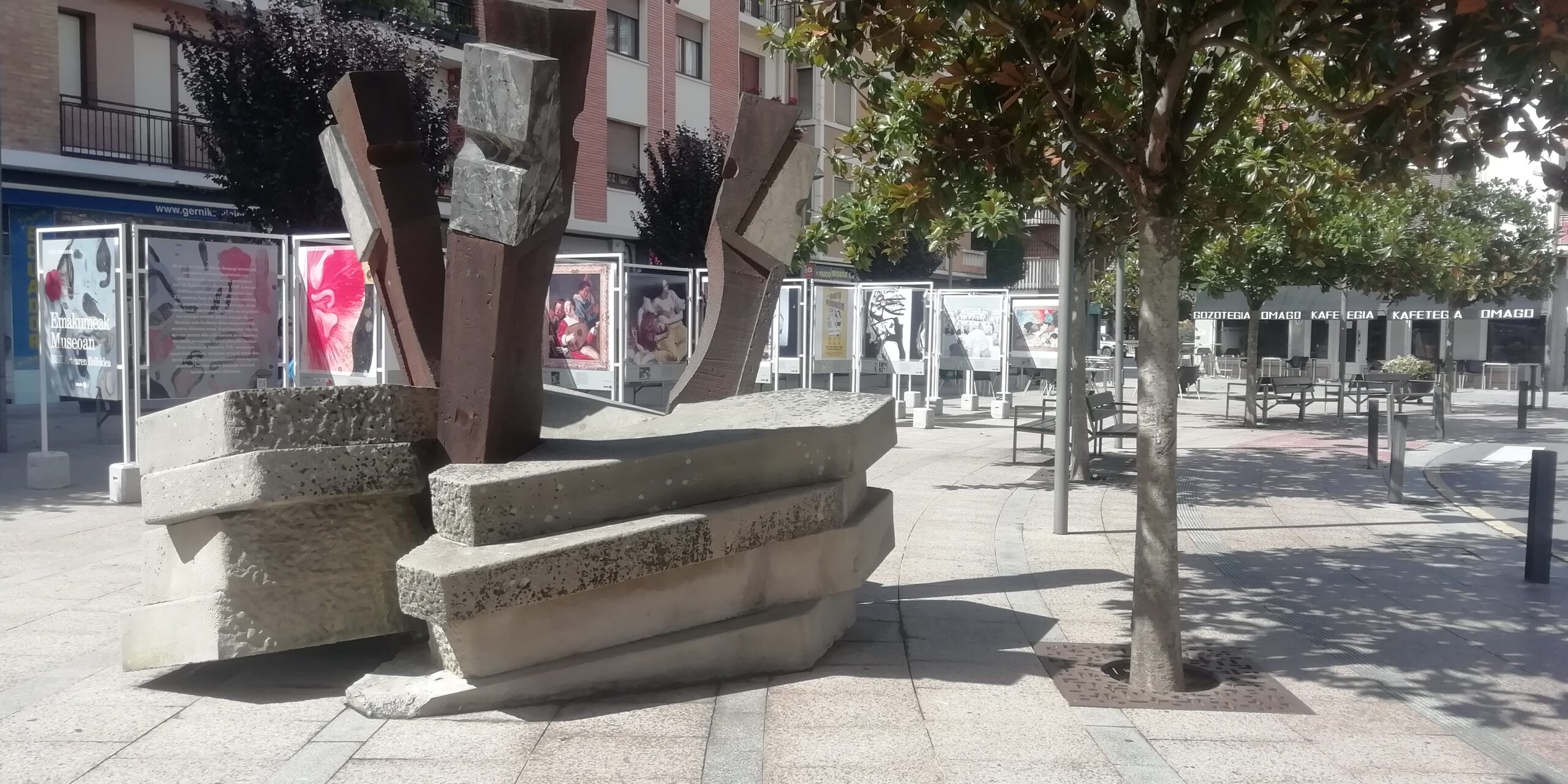
Art and Sculpture in Gernika
The Historical Trail
As we've said, you have to climb a few hills and staircases if you want to see the historical sights. There are a lot of them and the Marco Topo app is a good way to organise your trip, along with a free map from the tourist office.
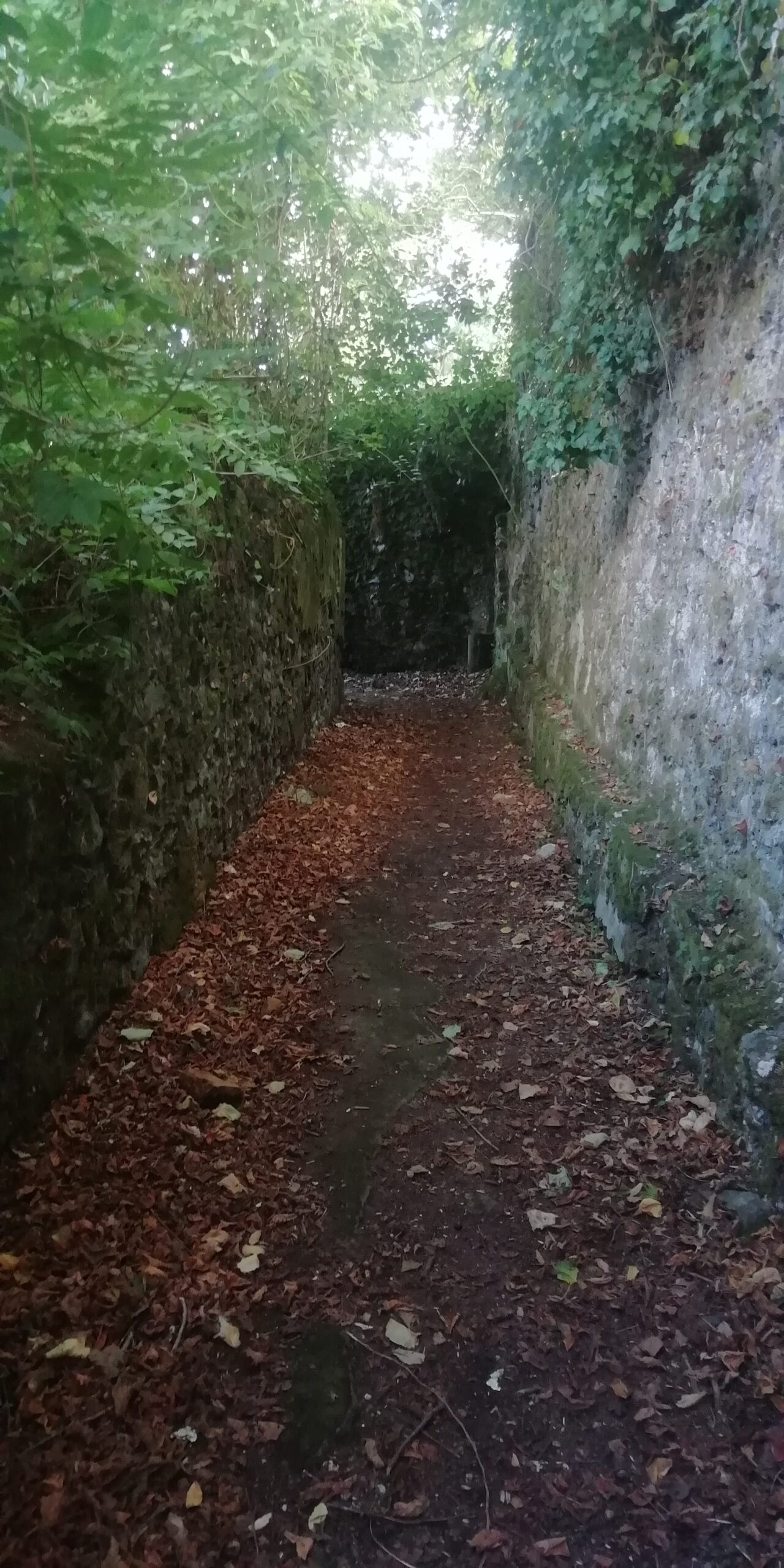
Ancient walkways, in and around Gernika
The Oak of Gernika
In days of old, the kings of Castile would pay homage to the lords of Bizkaia under an ancient oak tree. This Oak of Gernika is symbolic of the fueros, ancient laws that governed the area for many centuries. These laws governed the land with land property rights and decision-making processes. The peoples of the Basque Country have retained the desire to self-govern since ancient times. The big kings of the Spanish central plain would therefore receive the respect of Bizkaian lords in return for promises of non-interference in local affairs.
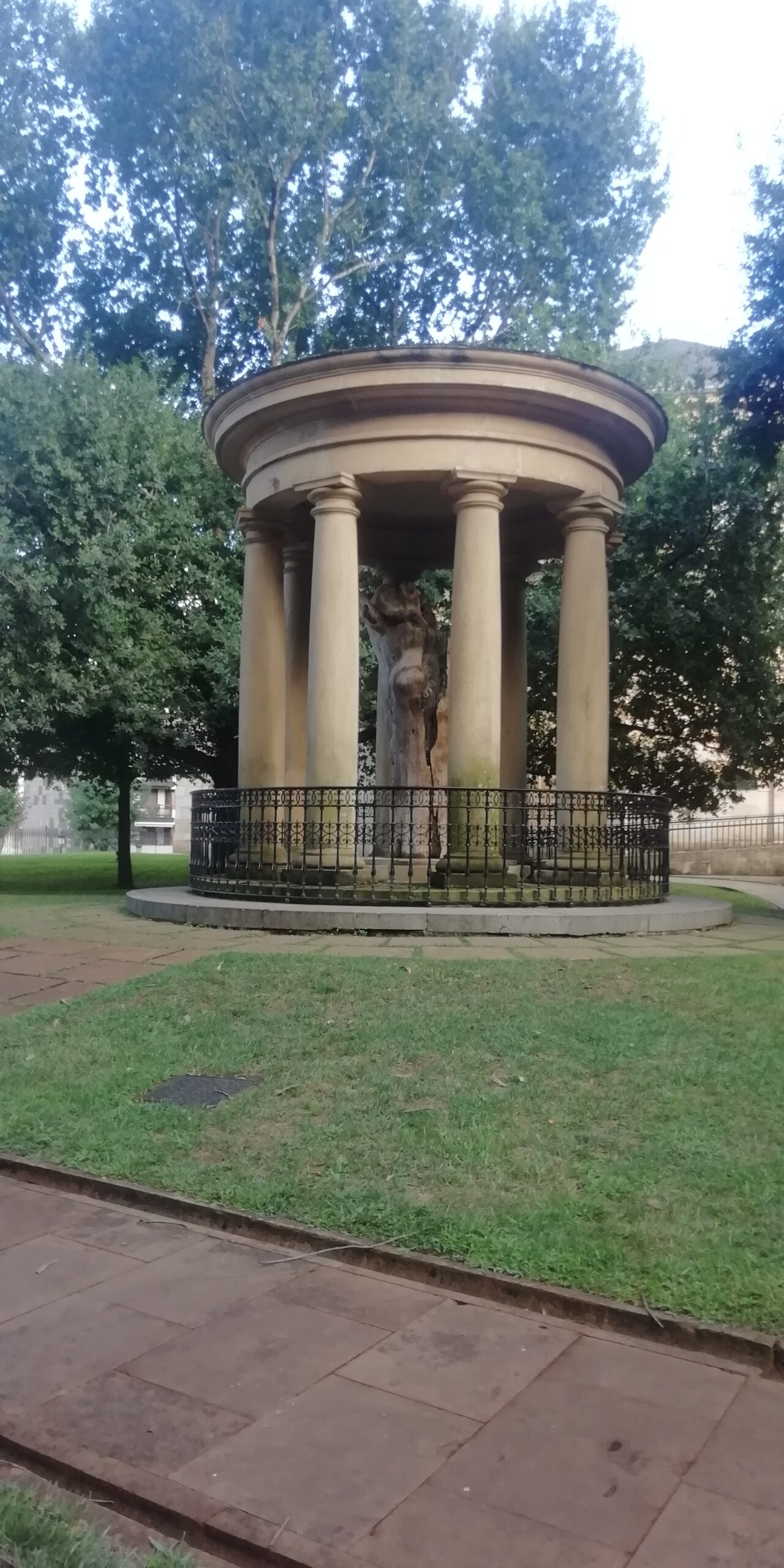
The fabled Oak tree of Gernika, the old one now a stump, a symbol of the ancient foral laws of Biscay
The oak has had several incarnations. Better said, the five trees dating from the 14th Century have all been of the same 'dynasty'. Every time one of the trees die, a 'child' of the old trees, grown from the acorns, takes the place of its predecessor. The government of Biscay is well prepared for such outcomes, and its gardeners have spare trees at the ready.
Sculptures and Scenic Walks
Around the corner from the oak and across Parque de Europa, you will find sculptures from local sculptor Eduardo Chillida and Henry Moore, an English artist. Sculpture is a big thing in the Basque Country, with many monuments of stone and metal dotting the region. Guernica is no different, and they sit quietly in the various parks covering the village.
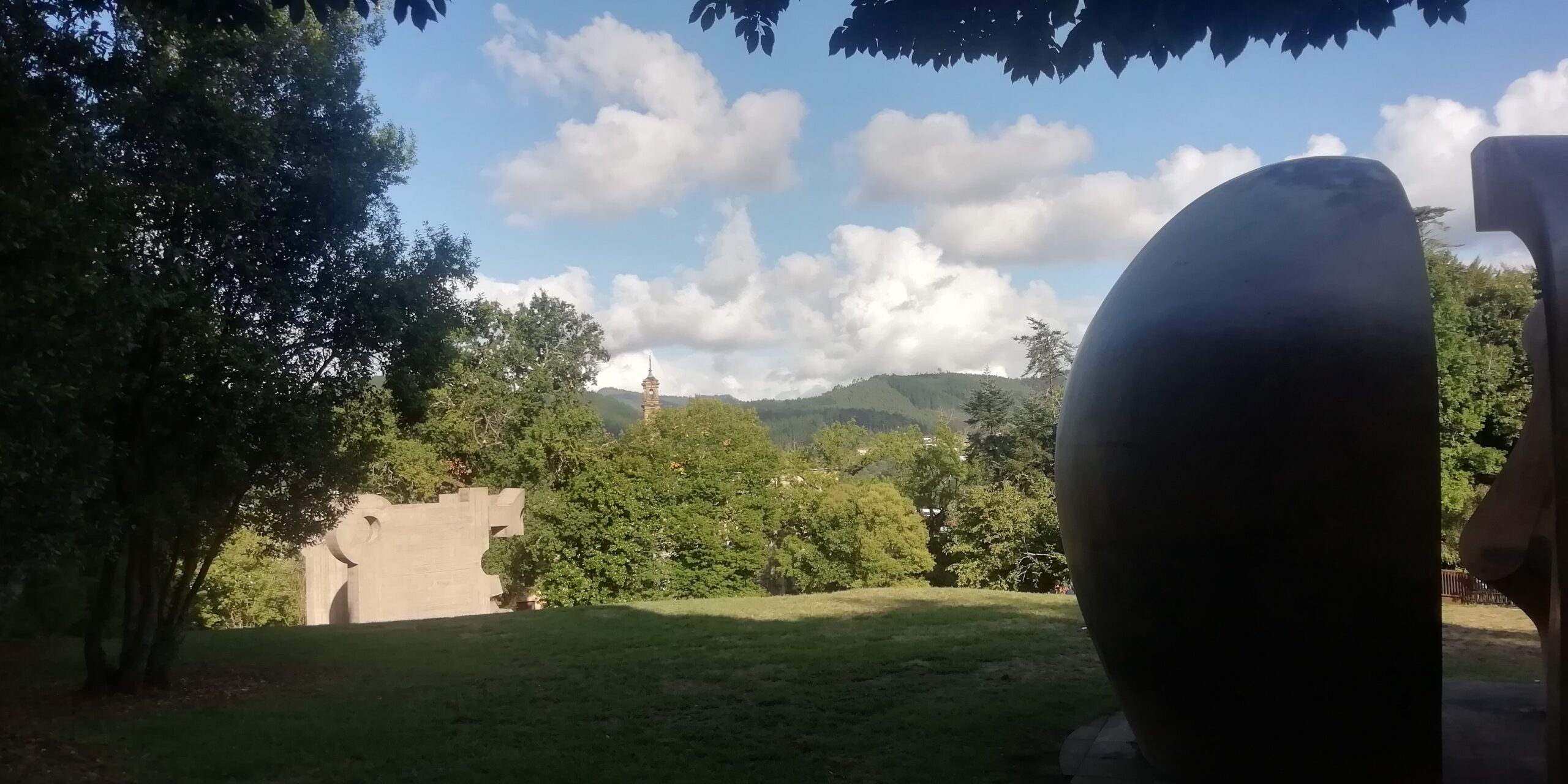
Sculptures and Spires surrounded by the green of Gernika
Getting something to eat
Easily done and in one place we found, there was a deal on a plate of pintxos. A plate of maybe five or ten pintxos for a reduced price is a common deal around Bilbao and surroundings. The culinary culture of pintxos in the Basque Country is a bit different from the idea of Tapas. Ruggedly individualistic folks might prefer pintxos to tapas as the latter is often shared in groups. A tapa isn't just as big as a full plate of food either, so it might not satisfy an appetite.
In any case, if you explore the streets and plazas, you will surely find bars full of mini-recipes on sticks and pieces of bread.
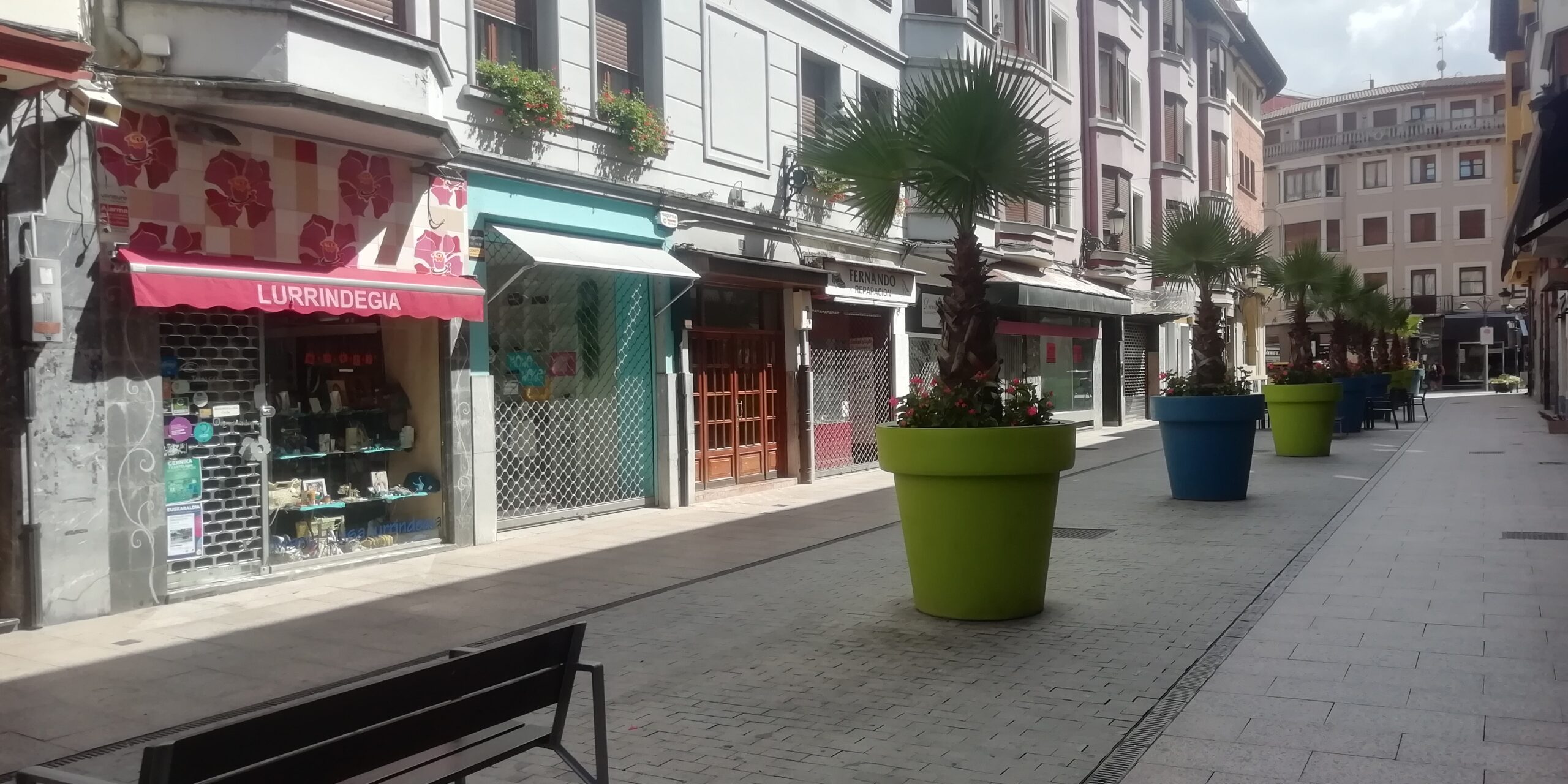
Moving onward
Guernica is on the Euskotren line between Bilbao and coastal Bermeo. Therefore, if you are staying in Bilbao, it could form part of a trip to the coast. It is on the Urdaibai Estuary, an area of biodiverse marshland with an extensive range of flora and fauna. Leaving town on the train towards the coast, you pass alongside the waters of the nature reserve. Eventually, you come to the towns of Mundaka, a surfing paradise, and the port of Bermeo, formerly a whaling centre. You can read more about Bermeo at this link.
The entire area of eastern Bizkaia, or Biscay in English, is a beautiful green area gathered around this marshy estuary stretching outward to the sea. It has forests covering mountains, and there are plenty of rural walkways to enjoy. The train and bus systems help get you there and back, with very few complaints on our part on the overall transport system.
Moving beyond
Many admirers of the famous painting by Picasso like to visit the town. However, they will not see anything similar to the horror of what the painting depicts, apart from its reprints on the town's walls and tourist shops.
Guernica is a historic municipality set in a leafy and green backdrop in the Basque hills. The town is so much more than that though and deserves a visit.
